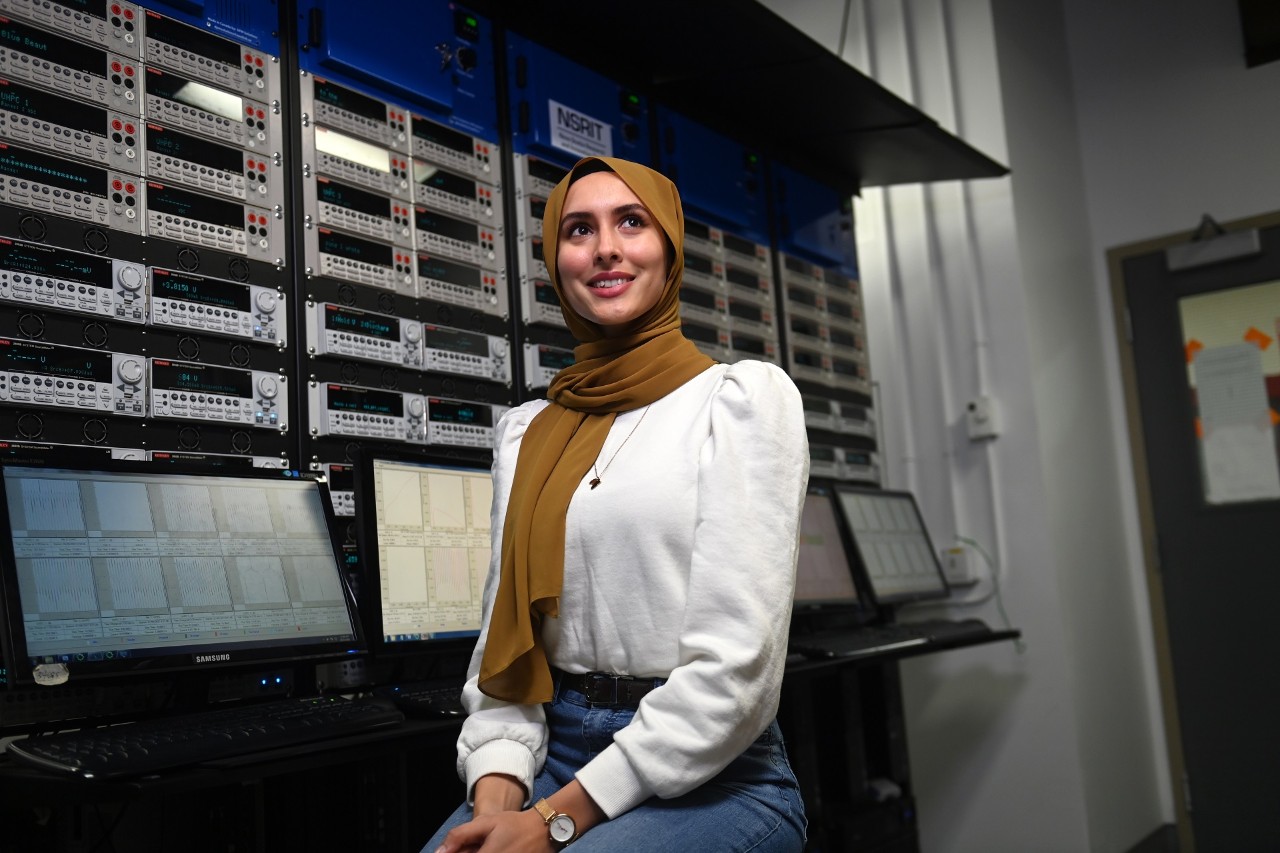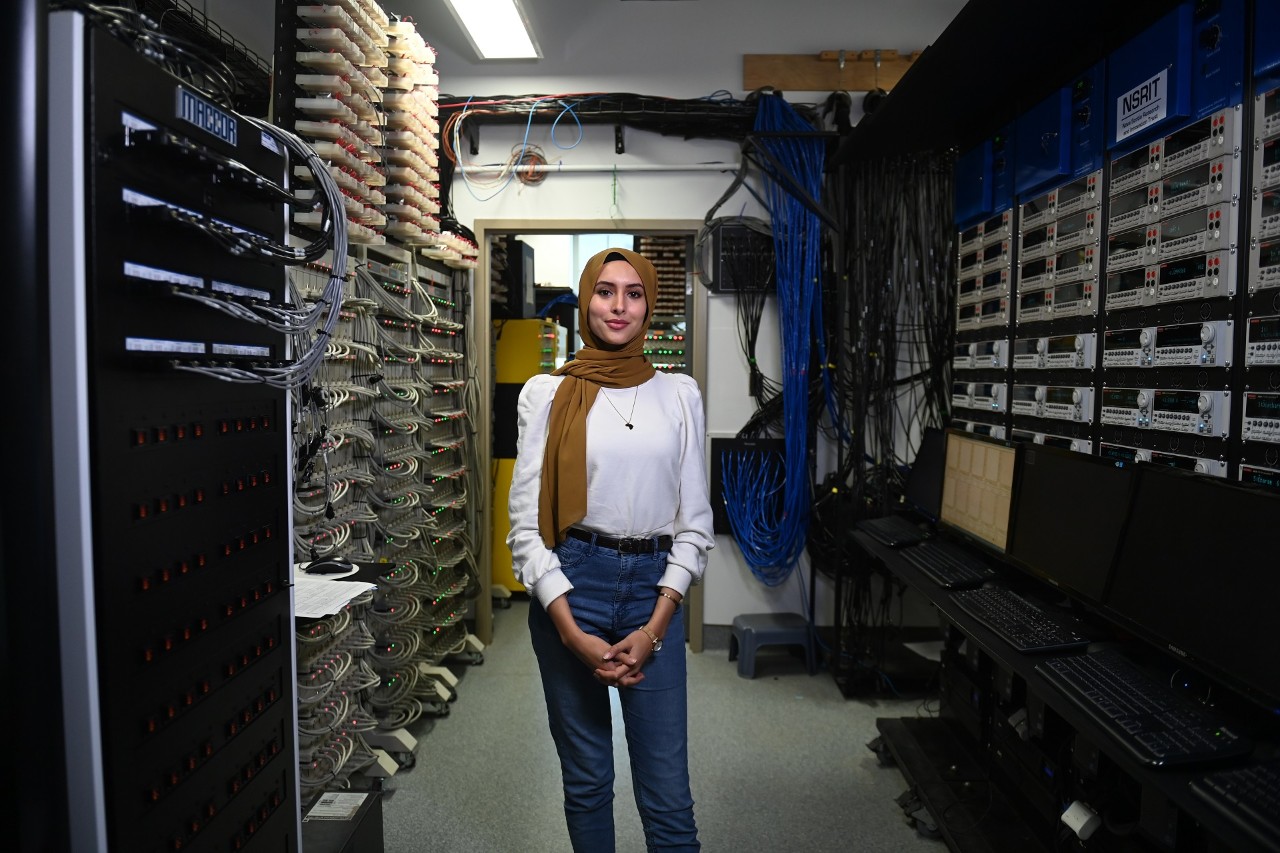Lithium-ion batteries. They have changed our world as power sources for smartphones, pacemakers, and electric cars. But they also pose problems because they use cobalt to enhance energy storage and battery life.
“Most of the world’s cobalt is mined in Africa and it has been related to significant sociocultural and environmental issues such as child labour, safety, and lack of compensation,” explains Ines Hamam, a Killam Scholar who is earning her PhD in Materials Engineering at Dalhousie University. “Being from Northern Africa, it is really important to me to help the battery industry end its reliance on cobalt so that we can prevent the destruction of the continent.”
Ines is making progress on that goal with the Jeff Dahn Research Group at Dalhousie. She is working with them to develop enhanced electrode materials for lithium-ion batteries. Specifically, Ines is exploring the potential to replace cobalt with other materials, which would result in electric vehicle batteries that are not only less problematic but more affordable. It is research that has the potential to bring about a global transition to renewable energy sources and thus help reduce both greenhouse emissions and the impact of climate change.
Perhaps the most promising option for replacing cobalt is nickel, which is abundant, easy to mine, and delivers comparable energy. But Ines says using nickel presents its own set of challenges. “It isn’t entirely green, for one, and achieving high energy density requires pushing nickel to a level that may not be safe,” she explains. “Also, you have faster capacity fade when using nickel, which means the battery loses its ability to hold a charge quicker, and that compromises your driving range. We are looking at various approaches to address that, such as combining nickel with different coating materials, to create a high-performance electrode.”

Coating candidates include tungsten and aluminum. Through her own work and collaborations, Ines is exploring how these materials measure up in terms of performance as well as mechanical strength to ensure there are no compromises in safety. It is possible, she says, that none of the materials she is assessing may be adopted by the industry but adds that is not what motivates her in her work.
“It can take years to develop a solution that is applied by industry,” she explains. “What is important to me is to contribute to a better scientific understanding of these materials and lithium-ion battery technology in general. In that way, my work has value because it has the potential to inspire others to conduct more research in this area. And our combined efforts will provide the battery industry with the knowledge and guidance they need to make the right decisions.”
Ines plans to keep working with the battery industry after earning her PhD and hopes her efforts will lead to energy storage systems that not only take electric vehicles out of the realm of luxury items but also end our reliance on coal, petroleum, and natural gas.
“This is a relatively new field and there are many interesting startups focused on battery manufacturing, material manufacturing, and electric vehicles,” she says. “These startups are going to need the expertise to help them bring their products to market, and that creates significant potential for me to apply my training and help the world transition to more sustainable energy.”
Photo credits: Danny Abriel

